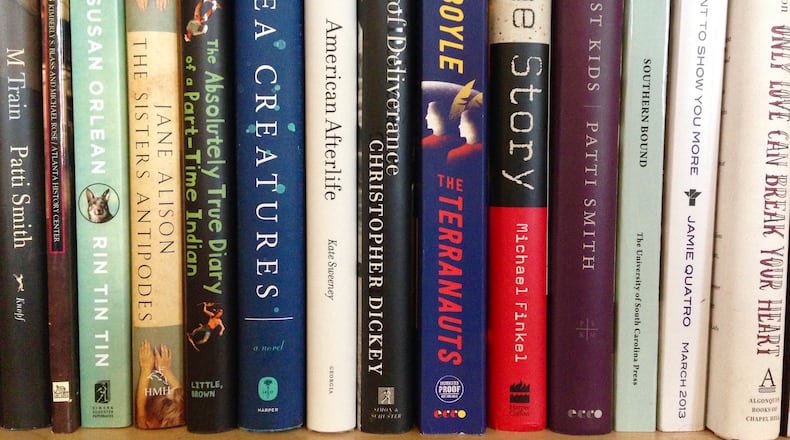Call it what you will — an oral history, a biography, an ethnography, a poem, a song. For Zora Neale Hurston's posthumously published book, "Barracoon: The Story of the Last 'Black Cargo,'" is a revelation that defies categorization.
A barracoon is a prison where Africans who’d been sold into slavery waited to board ships to Europe or the Americas. It is here, at the West African port of Ouidah, where 19-year-old Oluale Kossula, kidnapped from his town of Banté, awaited passage on the Clotilda to Mobile, Ala. This 1860 transoceanic voyage (50 years after the slave trade was outlawed) marked, as Hurston describes it, “the last load of slaves brought into the United States … the last deal in human flesh.”
At the age of 86, Cudjo Lewis, the name given to him by his enslaver Jim Meaher, was the only remaining survivor from Ouidah. When Hurston first arrived at his doorstep in 1927 in Plateau, Ala., (aka Africatown), it was to write an article for the Journal of Negro History (now the Journal of African American History). She returned four years later to complete this book-length work.
Kossula’s memory is astounding. In equally vivid detail, he recalls his happy childhood in Banté and his turbulent decades as a free man during Reconstruction, the Jim Crow South, World War I and the Great Depression. The dialogue between Hurston, a patient, fastidious interviewer, and Kossula, a cerebral and dynamic interviewee, is a triumph. “Sweet things can be palliative,” writes editor Deborah G. Plant in the introduction. “Kossola trusted Hurston to tell his story and transmit it into the world.” (In “Barracoon,” Hurston primarily spells his name Kossula. Plant spells it Kossola.)
Kossula’s meticulous testimony is rich and emotive. King Ghezo of Dahomey’s warriors staged the predawn attack of Kossula’s peaceful Isha Yoruba people. “I see de people gittee kill so fast! De old ones dey try run ‘way from de house but dey dead by de door, and de women soldiers got dey head. Oh, Lor’!”
Hurston’s research corroborates this harrowing attack. In a March 25, 1931, letter to her benefactor, she writes, “I found at the library an actual account of the raid as Kossula said that it happened. Also the tribe name. It was not on the maps because the entire tribe was wiped out by the Dahomey troops.”
Soil, the fertile earth under Kossula’s feet, is an enduring theme in “Barracoon.” When Union soldiers set him and his brethren free from the Clotilda, they must come to terms with the fact that they will never earn enough money to fulfill their dream to return to Africa. “’Dey bring us ‘way from our soil and workee us hard de five year and six months … we ain’ got no country and we ain’ got no lan’.”
Kossula, along with some 30 others (most of whom were trafficked on the Clotilda), decide to purchase land from Meaher and start their own town, which they called ‘Affica Town.’ “We say dat ‘cause we want to go back in de Affica soil and we see we cain go. Derefo’ we make de Affica where dey fetch us.”
Brutally and forcefully uprooted from his homeland, Kossula never ends his quest to recreate his own family and community while movingly grappling with his dual and dueling identities — soldier versus slave, Isha Yoruba versus Black Alabaman, African versus American.
When Hurston initially submitted the book in 1931 for publication, Viking press turned it down because of its dialect. As Plant relays in the introduction, “The dialect was a vital and authenticating feature of the narrative. Hurston would not submit to such revision.” Hurston knew that any modification of Kossula’s voice would have erased the book’s heart and soul, and detracted from his gifted skills as an orator and storyteller.
It is well worth the almost hundred-year wait to read “Barracoon” as Hurston envisioned it.
“Research is a formalized curiosity,” wrote Hurston in her 1942 autobiography, “Dust Tracks on the Road.” “It is poking and prying with a purpose. It is seeking that he who wishes may know the cosmic secrets of the world and they that dwell therein.” Indeed, Hurston’s enthusiasm for ethnography drips from the resplendent pages in “Barracoon.” Over the course of their three months together, she contemplates Kossula’s revelations while keenly observing his routines and habits, giving him ample space for his meditations on loss and grief. She pries him gently with Georgia peaches, Virginia hams and watermelon, which they share on his porch. She keenly links passages that “set down essential truth rather than fact of detail, which is so often misleading.”
One could argue that a second attempt to publish “Barracoon” began as early as 1973, when a young writer named Alice Walker, nine years before the release of her novel, “The Color Purple,” paid tribute to Hurston’s unmarked grave in an overgrown ceremony in Fort Pierce, Fla. Walker had been deeply moved by Hurston’s work, particularly her second novel, “Their Eyes Were Watching God,” and the visit, along with the article published in Ms. magazine chronicling her journey, would awaken a nationwide appreciation for Hurston’s writings. In the foreword for “Barracoon,” Walker opines, “This is, make no mistake, a harrowing read. We are being shown the wound.”
Indeed, Hurston’s breathtaking illumination of this shameful chapter in American history addresses a singular question: “How does one sleep with such memories beneath the pillow?” With this transcendent book, she more than embodies the epitaph Walker selected for her modest gravestone: “Zora Neale Hurston: A Genius of the South.” Or perhaps, simply, a genius.
NONFICTION
‘Barracoon: The Story of the Last ‘Black Cargo’’
By Zora Neale Hurston
HarperCollins
208 pages, $24.99
About the Author
The Latest
Featured



